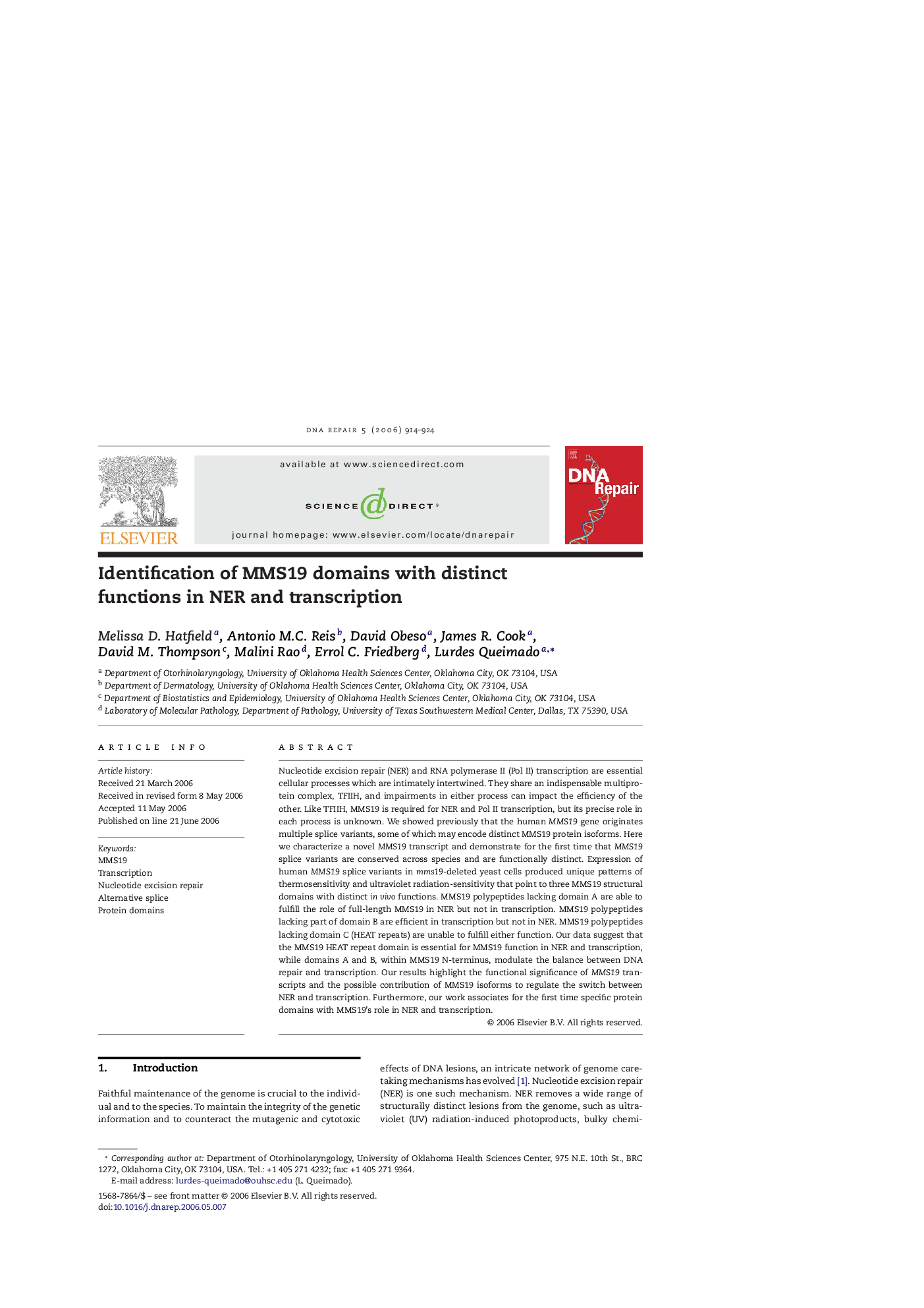| Article ID | Journal | Published Year | Pages | File Type |
|---|---|---|---|---|
| 1981394 | DNA Repair | 2006 | 11 Pages |
Abstract
Nucleotide excision repair (NER) and RNA polymerase II (Pol II) transcription are essential cellular processes which are intimately intertwined. They share an indispensable multiprotein complex, TFIIH, and impairments in either process can impact the efficiency of the other. Like TFIIH, MMS19 is required for NER and Pol II transcription, but its precise role in each process is unknown. We showed previously that the human MMS19 gene originates multiple splice variants, some of which may encode distinct MMS19 protein isoforms. Here we characterize a novel MMS19 transcript and demonstrate for the first time that MMS19 splice variants are conserved across species and are functionally distinct. Expression of human MMS19 splice variants in mms19-deleted yeast cells produced unique patterns of thermosensitivity and ultraviolet radiation-sensitivity that point to three MMS19 structural domains with distinct in vivo functions. MMS19 polypeptides lacking domain A are able to fulfill the role of full-length MMS19 in NER but not in transcription. MMS19 polypeptides lacking part of domain B are efficient in transcription but not in NER. MMS19 polypeptides lacking domain C (HEAT repeats) are unable to fulfill either function. Our data suggest that the MMS19 HEAT repeat domain is essential for MMS19 function in NER and transcription, while domains A and B, within MMS19 N-terminus, modulate the balance between DNA repair and transcription. Our results highlight the functional significance of MMS19 transcripts and the possible contribution of MMS19 isoforms to regulate the switch between NER and transcription. Furthermore, our work associates for the first time specific protein domains with MMS19's role in NER and transcription.
Related Topics
Life Sciences
Biochemistry, Genetics and Molecular Biology
Biochemistry
Authors
Melissa D. Hatfield, Antonio M.C. Reis, David Obeso, James R. Cook, David M. Thompson, Malini Rao, Errol C. Friedberg, Lurdes Queimado,
